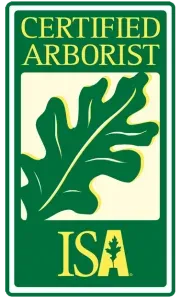Not all lawn issues are caused by pests or poor maintenance—sometimes it comes down to what's happening under the surface. If you're noticing uneven growth, dry patches, or poor performance despite regular watering, your soil may be the real culprit. Let’s break down some of the most common soil-related lawn problems and how to address them.
When it comes to cutting your grass do you know the proper height it should be cut? Caring for your garden can be a lot more complicated that it seems it would be on paper. You have to keep on top of raking leaves in fall, make sure pests and weeds aren’t taking over, make sure you aerate your lawn once a year. The list goes on and on.
The outside of your home can be just as, if not more, important than the inside. A well-maintained lawn can be a big part of keeping your house looking attractive and clean. A little bit can go a long way in proving you care for your home and even your neighborhood.
Looking after a lawn and making sure it stays fresh and healthy is often easier said than done. From clearing leaves and snow from your lawn in the colder months to fertilising, mowing and removing weeds in spring and summer, you have to put a lot of work into keeping your lawn green.
If your plants aren’t growing as expected, despite watering, fertilizing, and care, compacted soil might be the problem hiding just below the surface. It’s a common but often overlooked issue that can choke out your plants and leave your lawn struggling. Let’s walk through how to spot it, why it happens, and what you can do to fix it.
If your lawn suddenly looks like it’s been scalped or unevenly mowed, armyworms or sod webworms may be to blame. These hungry caterpillars can move in fast and do major damage in a short amount of time. The good news? If you act quickly, you can stop the infestation and help your lawn recover.
Not all yards are created equal. Commercial Lawn Mowers are becoming more and more popular for maintaining residential lawns. There are several reasons you might choose a heavy-duty machine for your personal landscaping.
During winter, salt is commonly used to melt ice on roads and driveways, making travel safer. However, while salt works wonders for de-icing hard surfaces, it can cause significant harm if it reaches your lawn. Salt buildup in soil can seriously affect the health of your grass and plants.
Lily pads may be beautiful, but when they take over your pond, they can quickly become a serious problem. Overgrown lily pads reduce oxygen levels in the water, which can harm fish and other aquatic life.
Composting is a wonderful strategy to create stimulants and fertilizer for your garden or lawn and is an extremely eco-friendly way to help resolve the existing land fill dilemma. In this short article, we are going to examine 10 facts about composting.
Winter might leave your lawn looking tired, patchy, or even suffocated under months of snow, ice, and debris. But don’t worry—your lawn just needs a little wake-up call. And that starts with one of the most basic (and underrated) tools in your shed: a sturdy rake.
Bermuda grass is one of the most popular lawn grasses in the southern United States, and for good reason. Known for its resilience, fast growth, and ability to thrive in hot, sunny conditions, it’s a top choice for both homeowners and farmers. Here’s everything you need to know about this hardy and fascinating grass.
Fertigator Fertilizer systems are a type of fertigation system. Fertigation, usually used among landscapers, is a type of automatic fertilizer injection system that can be connected to any in-ground sprinkler system. You might consider this process as a form of “spoon feeding” your soil, since the objective is to send small amounts of fertilizer through an irrigation system each time the system becomes active.
Oatmeal is one of the healthiest foods you can include in your diet. It is rich in fiber, antioxidants, and other nutrients. Although it is low in fat and cholesterol, it is one of the most filling foods around.
If you’ve ever asked yourself, “Should I put ashes in my garden?”—you’re not alone. It’s a common question among home gardeners, especially those who use a wood-burning fireplace or fire pit.






